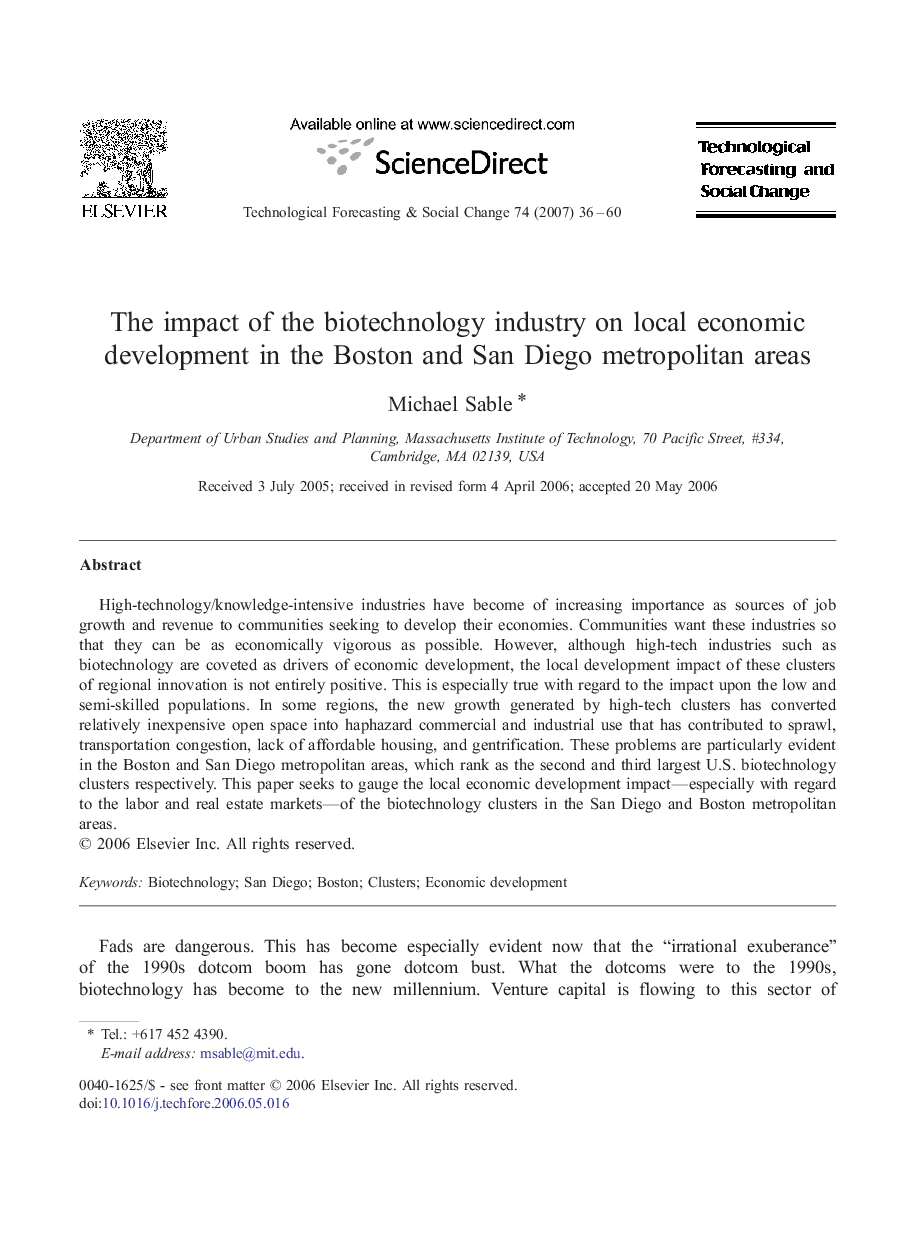| Article ID | Journal | Published Year | Pages | File Type |
|---|---|---|---|---|
| 897368 | Technological Forecasting and Social Change | 2007 | 25 Pages |
High-technology/knowledge-intensive industries have become of increasing importance as sources of job growth and revenue to communities seeking to develop their economies. Communities want these industries so that they can be as economically vigorous as possible. However, although high-tech industries such as biotechnology are coveted as drivers of economic development, the local development impact of these clusters of regional innovation is not entirely positive. This is especially true with regard to the impact upon the low and semi-skilled populations. In some regions, the new growth generated by high-tech clusters has converted relatively inexpensive open space into haphazard commercial and industrial use that has contributed to sprawl, transportation congestion, lack of affordable housing, and gentrification. These problems are particularly evident in the Boston and San Diego metropolitan areas, which rank as the second and third largest U.S. biotechnology clusters respectively. This paper seeks to gauge the local economic development impact—especially with regard to the labor and real estate markets—of the biotechnology clusters in the San Diego and Boston metropolitan areas.
